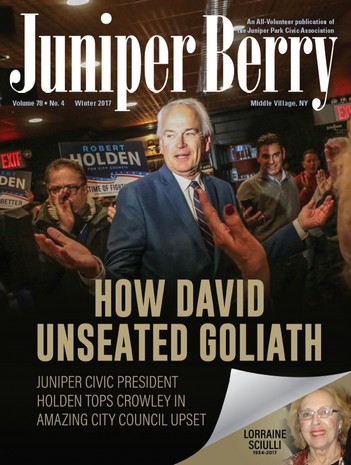In 1775 as the Revolutionary War was starting, there was a sharp disagreement among the local farmers as to their future government with some of the farmers being Loyalists who wanted the English Government to remain in America and others were Patriots seeking American independence. In late August, 1776 a battle was fought on the western end of Long Island between an American Army under the command of General George Washington and British troops supplemented by Hessian mercenaries, under the command of General William Howe. The battle ended in a disastrous defeat for the American Army which fled in small boats under cover of darkness across the East River to Manhattan.
In the fighting on Long Island several American generals were captured including General John Sullivan. General Howe of the British Army was convinced that as a result of the defeat on Long Island, the American Continental Congress which was meeting in Philadelphia would agree to peace and end the revolt. He therefore spent several days discussing the matter with the captured American generals.
It was decided that General Sullivan would travel to Philadelphia to present the proposal to the Continental Congress. In this interim period in late August and early September, the British Army had stationed their troops at various locations on Long Island including some in proximity to the head of Maspeth Creek. Among the latter were the troops that camped on the hills at what is now Grand Avenue and 83rd Street in Elmhurst.
General Sullivan returned from Philadelphia on September 11, 1776 and his message from the Continental Congress to General Howe was a question: Did he have the authority to make peace?
General Howe interpreted this as questioning his authority. He terminated any further discussions about ending the war and ordered his staff to prepare to invade Manhattan Island. Accordingly, 84 barges, each rowed by 16 men, came up Newtown Creek to the Newtown Landing at the head of Maspeth Creek. These barges had been built by the British on Staten Island and used to ferry their troops across the bay from Staten Island to Long Island in August in preparation for the battle on Long Island.
On September 15, 1776 the British and Hessian troops that were encamped in proximity to the creek, including those troops that were encamped on the hills at what is now Grand Avenue and 83rd Street, embarked in the barges for the trip down the creek and across the East River. Three British man-of-wars laid down a barrage of cannon fire at Kips Bay in Manhattan and shortly thereafter the British and Hessian troops landed unopposed at Kips Bay. The American Army fled north and did not attempt to engage the pursuing British forces.
When General Washington's army reached Westchester, some militia companies from Long Island disbanded and the members of these companies over the next several weeks made their way back to their farms on Long Island primarily by crossing Long Island Sound. General Washington before departing New York City had requested permission from the Continental Congress to burn the city to deny it to the British, but the Congress refused his request. After his army left the city, on the nights of September 20th and 21st, American rebels in the city set a number of fires and about 25% of the city was destroyed. Those rebels setting fires who were captured, were shot and killed by the British garrison troops under the command of Major General Robertson.
As a result of the American loss on Long Island, for the balance of the war until it ended in 1783, the British Army occupied Long Island primarily using troops as the garrison. During the winter time, the Hessian soldiers occupied crude huts which required large amounts of fire wood to keep warm. As a result, the forests were denuded and when ended, fire wood was scarce, so much so, that for a period of time, the residents of the area dug peat from the nearby Juniper Swamp and burned it for fuel.




